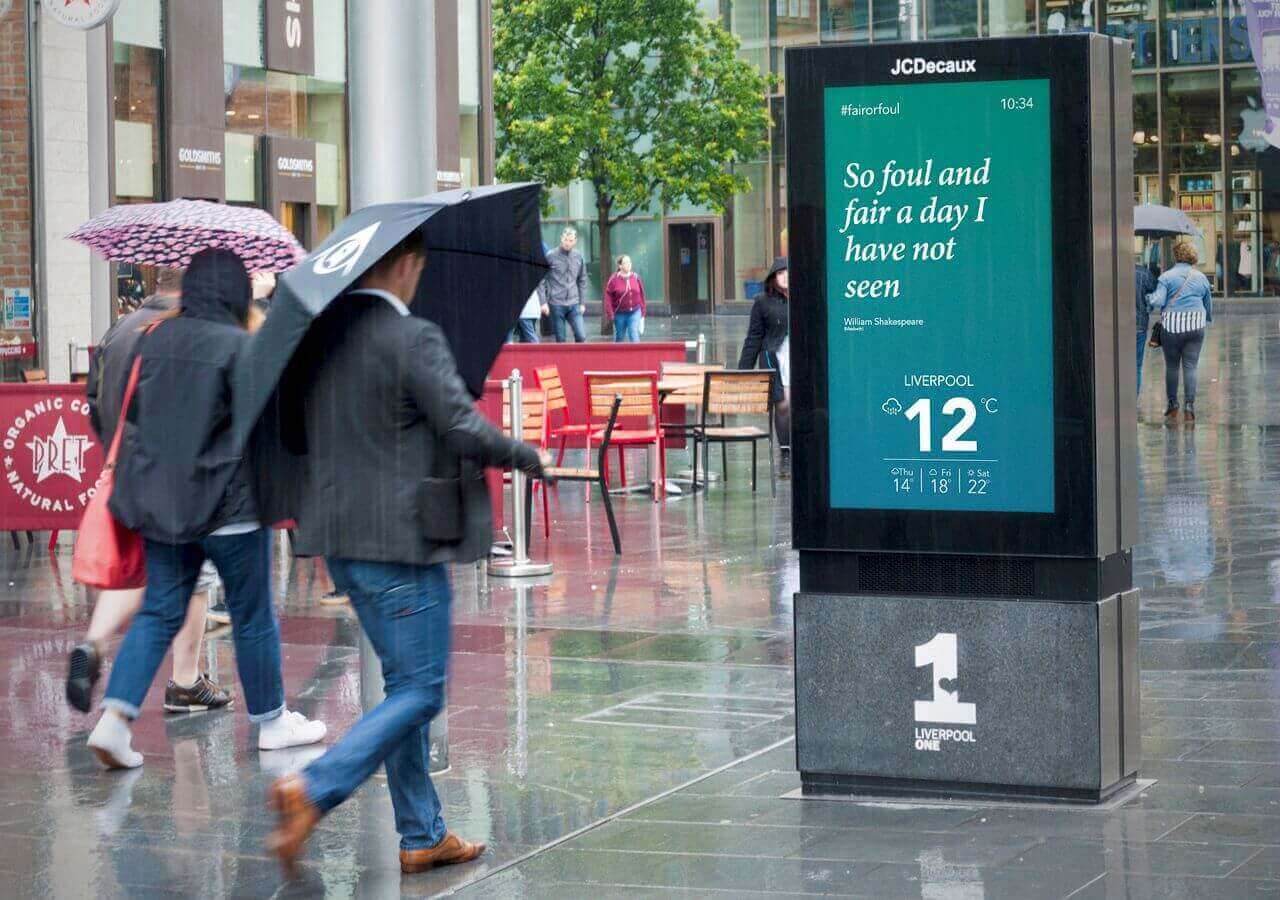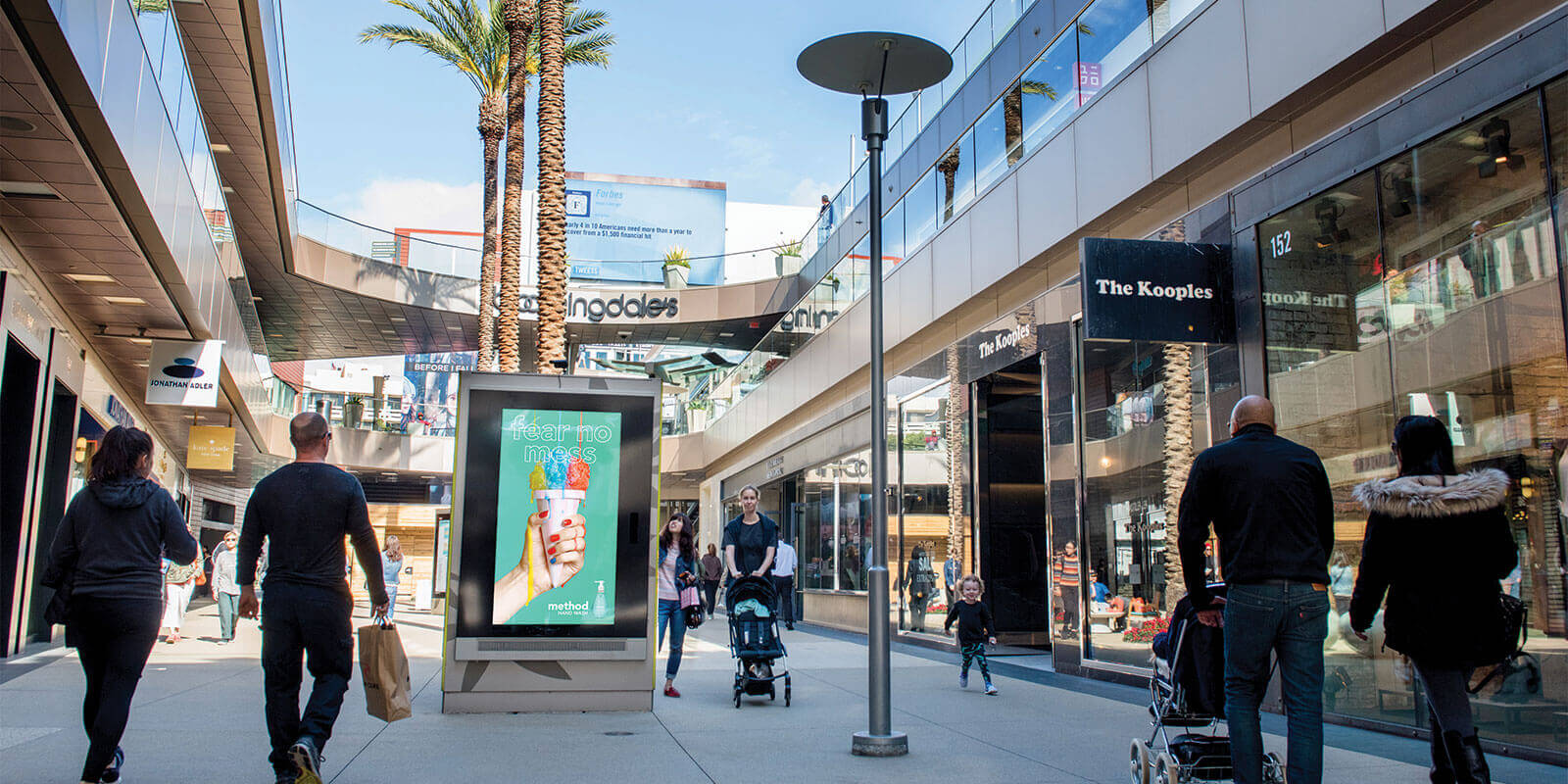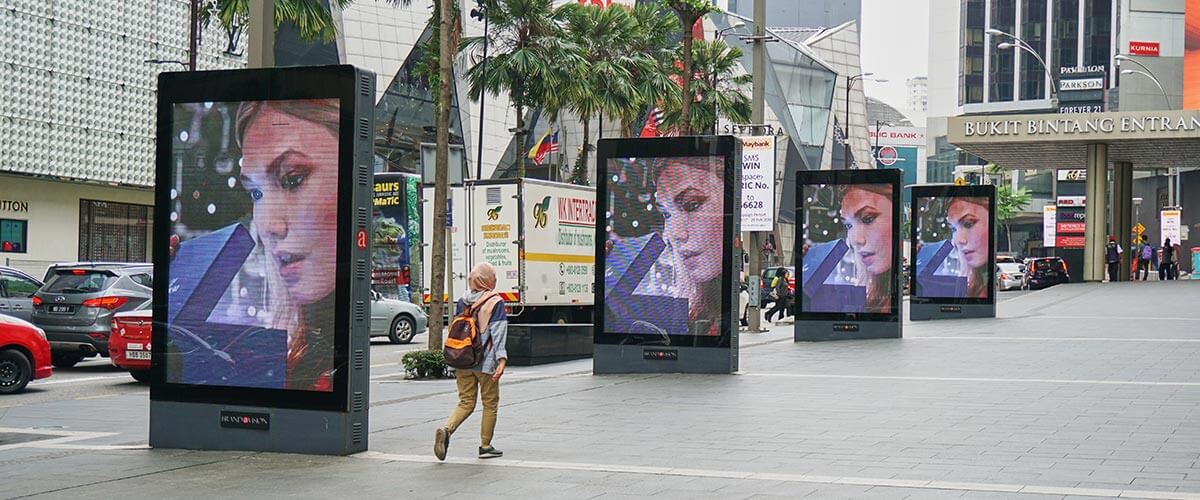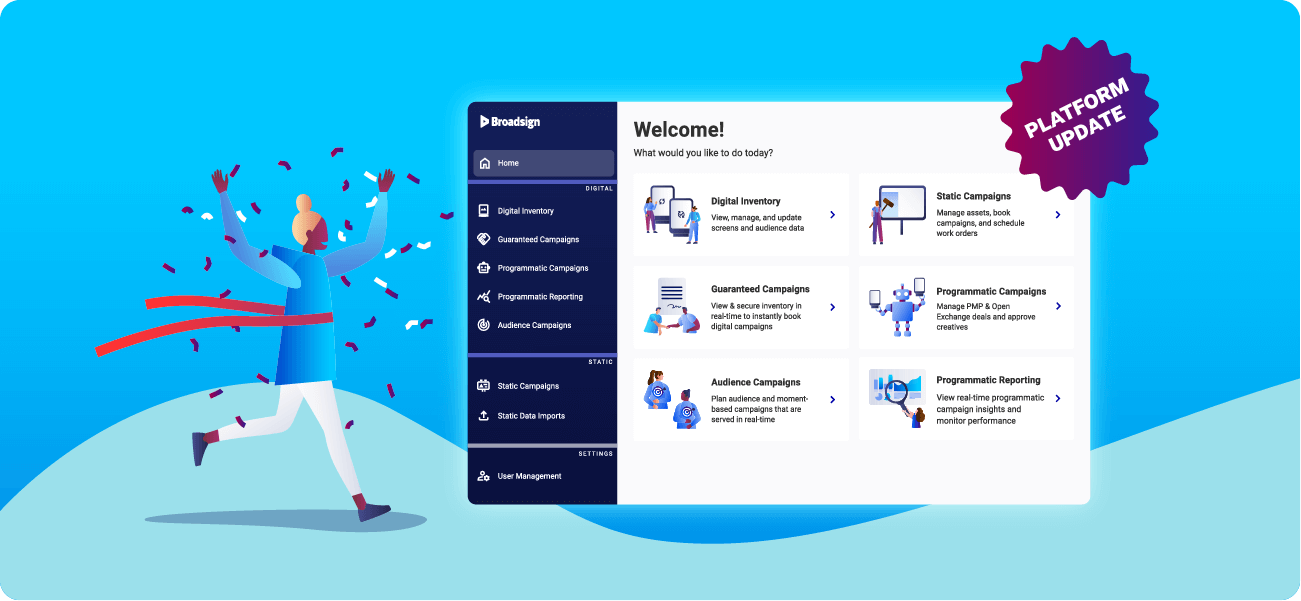| October 11, 2021
Four lessons from digital that will inform DOOH’s programmatic transition
Digital advertising has come a long way since Wired Magazine offshoot HotWired and AT&T launched the first banner ad in 1994, in part thanks to its shift to programmatic. By 2019, more than 83 percent of US digital display ad transactions are expected to occur programmatically, but digital-out-of-home (DOOH) is just beginning to embrace programmatic. As it begins to take hold, DOOH stands to gain a lot by looking at the evolution of programmatic online and mobile advertising over the last decade. Here are four key takeaways:
1. Relevance matters
Programmatic is often conflated with the goals and practices of online direct marketers (conversion optimized bidding, tight audience targeting and retargeting) because they used these. However, the elements of a programmatic stack (DSPs, DMPs and SSPs) can be used to chase many contexts and it turns out that there are many contexts that matter to audiences (and thus to advertisers) just as much or more than what websites we visited yesterday. Local weather conditions, traffic on the freeway, the score of the football game, train schedules, movie times, our proximity to a store and other signals all influence our days enormously and can be targeted with programmatic tools. Many of these signals are place-based and DOOH inventory is a great way to deliver relevant messages based on these signals at scale.
2. Experience is everything

Time and again the audience experience has been shown to influence buying decisions and brand loyalty. The original programmatic model offered up new data that enabled online and mobile advertisers to create more memorable experiences. Pedigree’s Found campaign from a few years ago, which included a community-driven app for posting and finding lost animals, is a great example. DOOH publishers can take advantage of this programmatic model to similarly use real-time access to traffic, weather and other pertinent data to trigger on-the spot creative decisions. Media buyers can also transact on that information to bring consumers more meaningful experiences in the moment. Because programmatic DOOH is accessible via digital ad platforms it also opens the door for DOOH to become more tightly integrated into the campaign planning process early on, making omni-channel experiences with creative mobile and online tie-ins more feasible.

3. Physical context drives purchase decisions

Google and Instagram, among other major advertising platforms have shown that reaching people on the move leads to increased purchases. For instance, Google found that 76% of people who search for a product or service on their smartphones nearby visit a business within a day and 28% of those searches drive purchases. Online and mobile advertising took advantage of geo-location technology early-on in its programmatic transition to support ad buys based on location. By nature DOOH already allows advertisers to communicate with people in malls, on the way to the game or near a restaurant, but can take advantage of programmatic technology to not only make transactions based on physical context that much easier, but also deliver campaigns based on omnichannel strategies, which have been shown to drive increased store visits.
4. Reach is key
As Cheers patrons and disciples of Byron Sharp know very well, it’s good when everyone knows your name. Brands like Tide, Chevy, Coca Cola and Nike have succeeded in this respect; however, achieving this level of familiarity has historically been challenging for brands that needed to reach a large number of people in their target market to benefit in the long run. The onset of programmatic made it much easier for brands to reach target audiences across online and mobile channels and at scale. DOOH can follow suit as the programmatic transition will likely drive more digitization of traditional street furniture and OOH billboards, and in turn, create opportunity to reach new audiences. Couple that with the advertising effectiveness of DOOH, which outpaces other mediums, and the ability to easily buy and sell ads with greater relevancy and physical context, and programmatic DOOH will be a powerful tool for expanding audience reach.
Programmatic revolutionized online and mobile advertising and is expected to do the same for DOOH. As DOOH marches toward programmatic, it’s clear that some of the key fundamentals uncovered through online and mobile’s transition could inform DOOH’s approach – from the importance of relevancy to expanding audience reach.
Are you ready to get started with programmatic digital out-of-home? See what Broadsign Reach can do for you!

